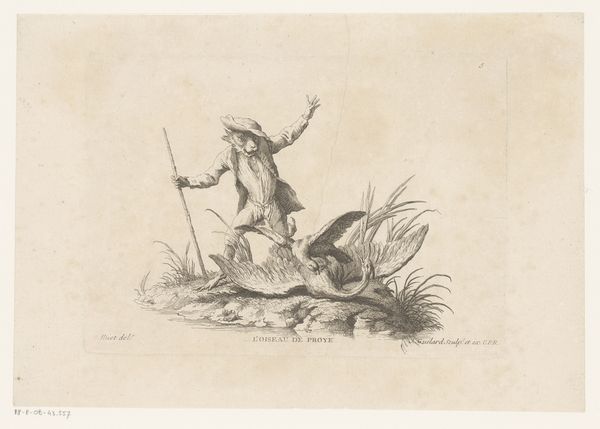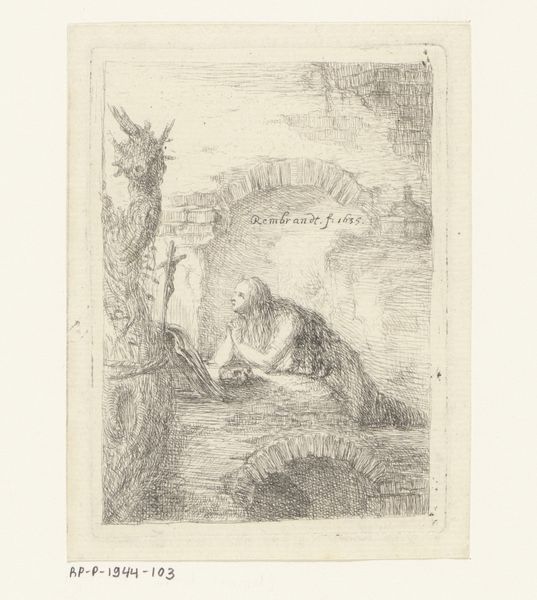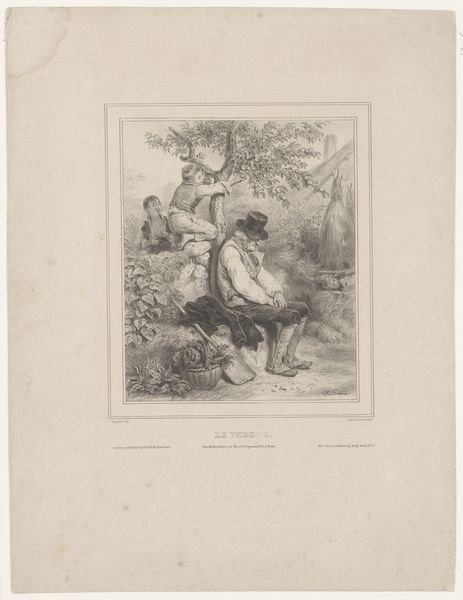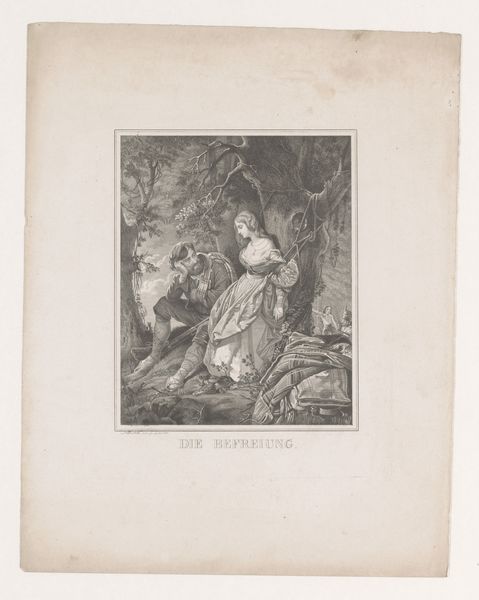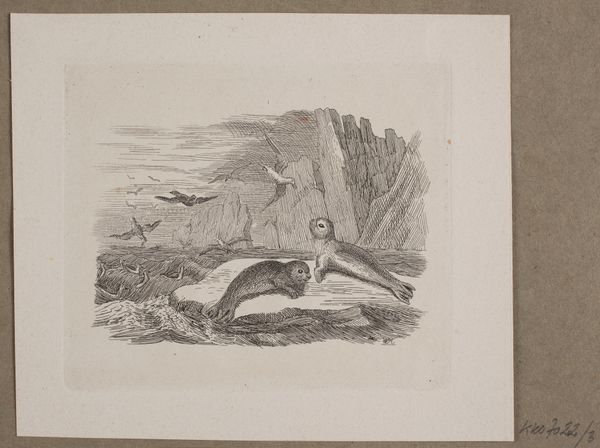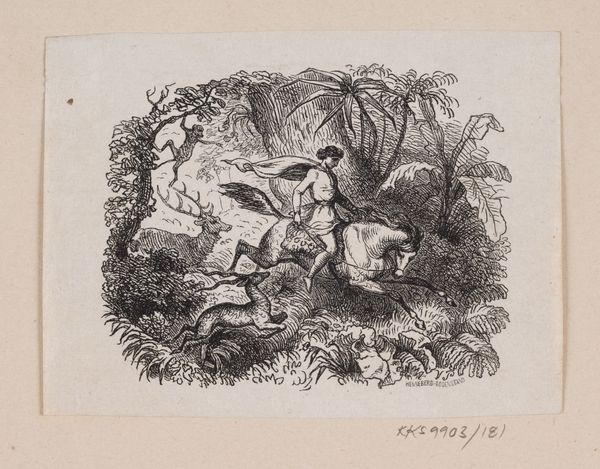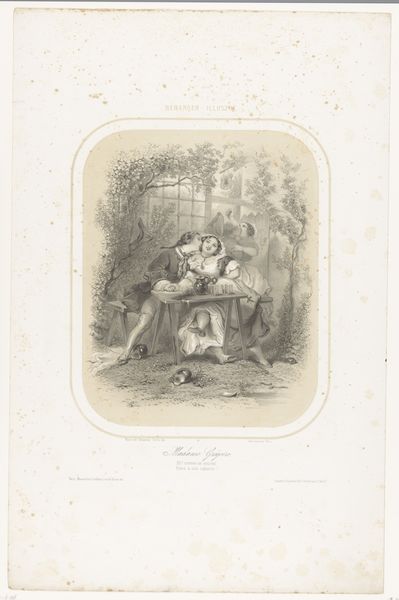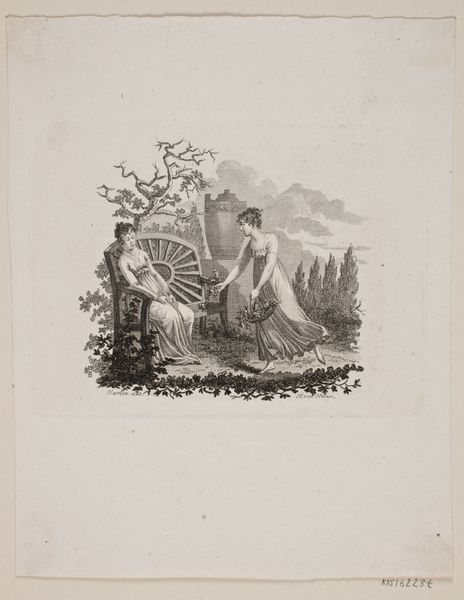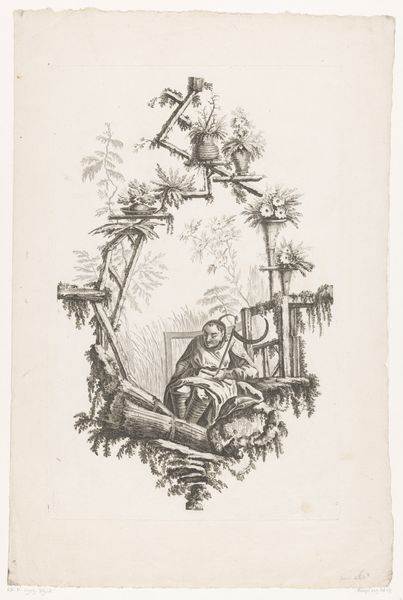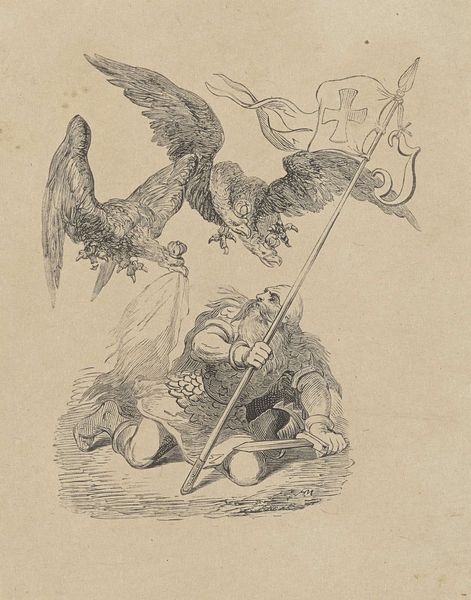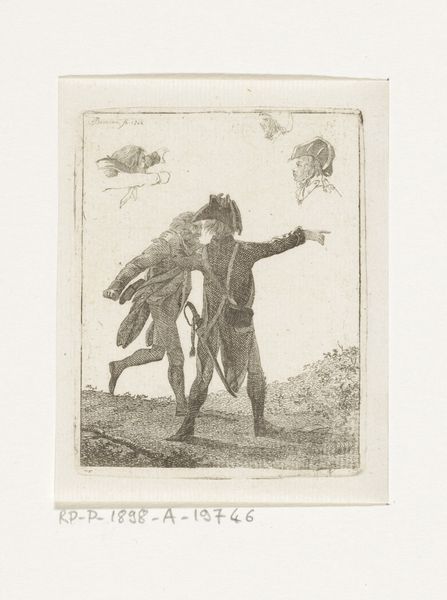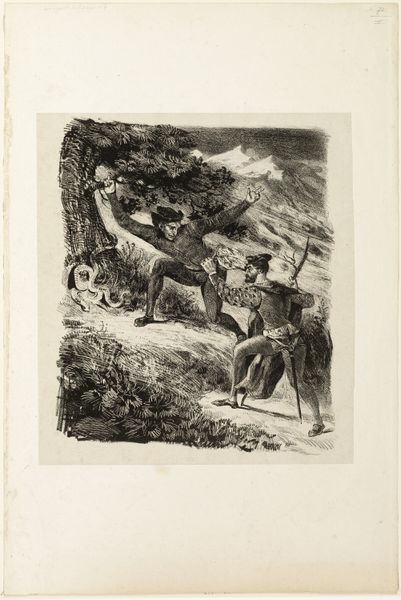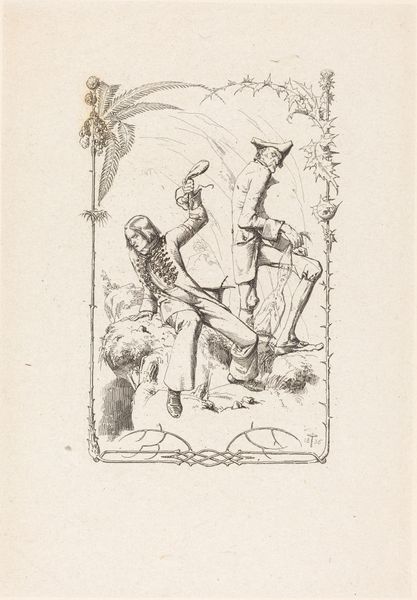
Dimensions: height 520 mm, width 360 mm
Copyright: Rijks Museum: Open Domain
Editor: This drawing, "Gabriël Grub wordt bezocht door de koning van de kabouters," made with pencil by Wilhelmus Petrus van Geldorp in 1871, has quite a peculiar atmosphere. It seems to hover between whimsy and something… darker. What's your take on this strange scene? Curator: Well, first off, "Memento Mori" is right there carved into the stone! This resonates powerfully. The drawing shows us Gabriel being visited by a goblin king sitting on a tomb and seems steeped in the symbolic language of Romanticism and even a touch of the Gothic—where the fairy tale realm bumps right up against reminders of mortality. Note the bones and shovel there on the ground! Editor: The bones are certainly foreboding, and there's a collection of strange characters in the background, too! I see birds above--vultures perhaps? It definitely makes this a unique piece. Is the fairy king an allegory of Death then? Curator: Quite possibly, yes! The Romantic artists often looked to folklore not just for entertainment, but to explore psychological truths and cultural anxieties. What else jumps out at you in the scene? Editor: Well, the main figure is dressed in contemporary clothing of the time, almost like a portrait… Curator: Yes. That very contrast—between mundane reality and fantastical intrusion—is a powerful element. Consider how such depictions served as vehicles to contemplate existential questions, with roots in Medieval folklore, art and spirituality. The ‘everyday’ moral is in sharp relief here against the surreal landscape, isn't it? Editor: It's incredible to think about the historical roots informing the emotional impact. Thanks for bringing this to light. I never would have seen all that on my own! Curator: My pleasure! There's much to ponder, I believe, in considering the persistence of visual themes throughout human history.
Comments
No comments
Be the first to comment and join the conversation on the ultimate creative platform.
